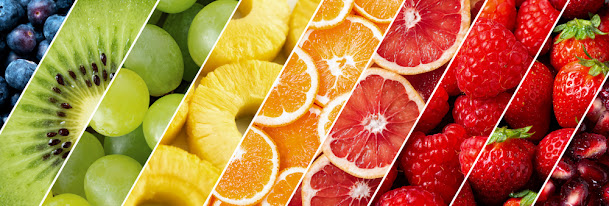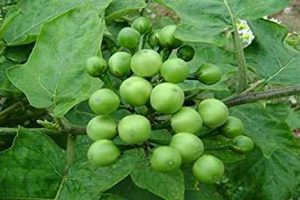A Comprehensive Guide to Eating Fruits and Vegetables: Exploring the Nutritional Benefits
Eating fruits and vegetables is one of the best ways to ensure a healthy lifestyle. Research has shown that a diet rich in fruits and vegetables can provide important health benefits such as reducing the risk of certain chronic diseases, improving digestion, boosting energy levels, and promoting overall health. And yet, many people still struggle to make fruits and vegetables part of their everyday diet. This comprehensive guide hopes to provide an in-depth look at the nutritional benefits of incorporating fruits and vegetables into your diet, as well as some helpful tips and tricks to help you make the most of your meals. Ultimately, it's all about finding the right balance between delicious flavors and healthy ingredients to create meals that your whole family can enjoy.
Nutritional Benefits of Eating Fruits and
Vegetables
Eating fruits and vegetables is one of the best ways
to promote overall health, including a reduced risk of certain chronic
diseases. A diet rich in fruits and vegetables has been shown to reduce the
risk of certain chronic diseases, including heart disease, type 2 diabetes,
certain cancers, and osteoporosis. Fruits and vegetables contain various
nutrients that have been shown to have positive effects on overall health. The
fiber content of fruits and vegetables helps promote digestive health and
maintain a healthy weight. Fruits and vegetables contain high amounts of
antioxidant compounds that help protect against oxidative damage to cells,
which can contribute to the protection of against cancer and other chronic
diseases. Although the health benefits of fruits and vegetables are clear, many
people struggle to incorporate them into their daily diets. However, there are
several ways to make this easier.
Recommended Number of Servings Per Day
Although there are many benefits of eating fruits and
vegetables, it is important to keep in mind that excessive portions can
actually increase the risk of some diseases. When it comes to the number of
servings of fruits and vegetables you should eat per day, the recommendations
vary depending on your age and gender. The reference numbers for daily servings
of fruits and vegetables are 2-2 ½ cups per day for women and 2 ½-3 cups per
day for men. Keep in mind that these numbers are a minimum, meaning that you
can increase your intake depending on your health goals. Additionally, the
numbers account for all the fruits and vegetables you eat throughout the day,
including snacks and side dishes.
Tips for Incorporating Fruits and
Vegetables Into Your Diet
Although the nutritional benefits of fruits and
vegetables are undeniable, many people struggle to incorporate them into their
diet. If you're looking to increase your intake of fruits and vegetables, try
the following tips. Remember that fruits and vegetables can be enjoyed in many
different forms. While many people think of fruits and vegetables as only their
raw or cooked forms, there are actually many other ways to enjoy them. For
example, fruit and vegetable juices, purees, and soups can be great ways to add
more servings of fruits and vegetables to your diet. Try out different cooking
methods. While many people think of fruits and vegetables as being served raw,
there are many different cooking methods that can make fruits and vegetables
even more delicious. Roasting, grilling, and sautéing are just a few examples
of how you can cook fruits and vegetables in new and exciting ways.
Exploring Different Types of Fruits and
Vegetables Online
vegetable shopping in Chennai
There are many different types of fruits and
vegetables, each with their own unique nutritional makeup. While there are many
different types of fruits and vegetables, some of the most common include
apples, broccoli, carrots, citrus fruits, kale, and spinach. Apples: Apples are
a popular and nutritious fruit that can be enjoyed in many different ways. They
can be eaten fresh, baked, made into sauces, and more. In addition to being a
good source of vitamin C and dietary fiber, apples contain a compound known as
quercetin that has been shown to have anti-inflammatory properties. Broccoli:
Broccoli is a popular vegetable that can be enjoyed both cooked and raw. It is
a good source of vitamin C and vitamin K, as well as a variety of
micronutrients. Carrots: Carrots are one of the most commonly consumed
vegetables, and for good reason. They are rich in fiber and vitamin A, as well
as many other vitamins and minerals. Citrus Fruits: A common example of citrus
fruits is lemons, limes, oranges, and grapefruits. These fruits are a good
source of dietary fiber, vitamin C, and other micronutrients. Kale: Kale is
often used as a topping or side dish, but can also be eaten raw. It is a good
source of vitamin A and vitamin C, as well as other micronutrients. Spinach:
Spinach is a popular vegetable that can be enjoyed both cooked and raw. It is a
good source of fiber and vitamin A, as well as other micronutrients.
Different Ways to Prepare Fruits and
Vegetables
On top of choosing a wide variety of Fruits
and Vegetables Online in Chennai, it can also be helpful
to experiment with different cooking methods to make them even more delicious.
Here are a few ways to prepare fruits and vegetables. Fruits and vegetables can
be enjoyed fresh and raw, either by themselves or as part of a snack mix. While
many people prefer to eat fruits fresh, some vegetables can be eaten raw as
well, such as carrots and broccoli. Fruits and vegetables can also be baked in
the oven. Baking fruits and vegetables is a great way to add a bit of sweetness
and texture to your dishes. Baking fruits such as apples and pears can also
help them retain their shape, making them ideal for desserts. Vegetables can
also be sautéed, which is a quick and easy way to enjoy them. Vegetables such
as spinach, kale, and broccoli can be sautéed with a small amount of water or
oil to help them cook faster and soften.
Grocery Shopping Tips for Buying Fruits
and Vegetables
When you're purchasing fruits and vegetables, it can
be helpful to keep a few things in mind. Choose fresh, organic, and locally
grown produce. Fresh, organic fruits and vegetables are the best option for
your diet, as they are less likely to contain contaminants and pesticides than
non-organic produce. Locally online vegetables Chennai
grown produce is more likely to be fresh and flavorful than produce that has
been shipped from far away, and it is also easier on the environment. Pick
produce that is in season. Produce that is in season is often cheaper and more
nutritious than produce that has been picked out of season and stored or
shipped to your grocery store. Furthermore, produce that is in season often
tastes better and is easier to incorporate into your recipes than out-of-season
produce.
Nutritional Resources for Eating Fruits and Vegetables
There is a wealth of information available on the
nutritional benefits of eating fruits and vegetables. Here are a few resources to
get you started. PNN - Produce Nutrition Facts - This website provides
information on the nutritional composition of many different types of fruits
and vegetables. Healthline - This website provides information on the different
health benefits of eating fruits and vegetables. Harvard Health - Harvard
Health provides in-depth information about the nutritional benefits of fruits
and vegetables. Mayo Clinic - The Mayo Clinic provides information on the
health benefits of eating fruits and vegetables. NHM - This website provides
information on the nutritional benefits of eating fruits and vegetables.
Conclusion
Eating fruits and vegetables is one of the best ways
to promote overall health, including a reduced risk of certain chronic
diseases. A diet rich in fruits and vegetables has been shown to reduce the
risk of certain chronic diseases, including heart disease, type 2 diabetes,
certain cancers, and osteoporosis. Fruits and vegetables provide important
nutrients that can help promote overall health, including vitamin C and dietary
fiber. The nutritional benefits of fruits and vegetables are clear, and
although many people struggle to incorporate them into their daily diets, there
are several ways to make this easier. There are many different types of fruits
and vegetables, and many can be enjoyed in many different ways. When you're
purchasing fruits and vegetables, it can be helpful to keep a few things in
mind.


Comments
Post a Comment